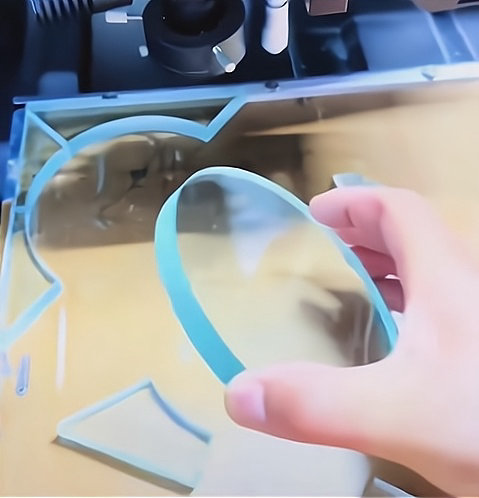Copyright © 2025 CRD Laser Technology Co., Ltd. All Rights Reserved
The application of CO2 laser in the glass and acrylic industry

CO2 lasers can be used to mark various glass and acrylic surfaces. From high-end glassware to various marks on beverage bottles. In addition, the application of CO2 lasers in the glass and acrylic industries also includes thick glass cutting, cutting of complex shapes and patterns, processing of special glass materials, collaborative application with automated production lines, and laser glass cutting and cracking integrated machines, etc.
Thick glass cutting
CO2 lasers, with their high power characteristics, are suitable for cutting thick glass. Due to its wide output power range, CO2 lasers perform well in thick glass cutting. Especially in building glass processing, for glass up to 10mm thick or more, the CO2 laser can complete the cutting task quickly and steadily, and can guarantee a certain cutting speed and cutting quality .
Cutting of complex shapes and patterns
For glass and acrylic products with complex shapes and patterns, the CO2 laser can precisely control the movement trajectory of the laser beam through the numerical control system. During the processing, the CO2 laser, with its stable output power and excellent beam quality, can precisely cut out various exquisite patterns. By adjusting parameters such as the power and speed of the laser, the cutting depth can also be controlled to meet the requirements of different design effects and achieve diversified cutting processes.
Processing of special glass materials
Some special glass materials, such as microcrystalline glass and borosilicate glass, have relatively high requirements for cutting processes. By optimizing the cutting parameters, the CO2 laser can adapt to the processing of these special glass materials. For instance, when processing microcrystalline glass, CO2 lasers can achieve high-precision cutting without damaging the material structure, avoiding problems such as cracks and chipped edges, and ensuring the processing quality of special glass products.
Collaborative application with automated production lines
In modern glass processing enterprises, CO2 lasers are easy to integrate into automated production systems and work in coordination with equipment such as robotic arms and conveyor belts. Through the automated control system, continuous feeding, cutting and discharging of glass can be achieved, which improves production efficiency, reduces manual intervention, lowers production costs and meets the demands of large-scale glass processing and production.
LATEST NEWS
- The application of CO2 laser in the automotive industry 2025-05-30 18:38:01
- Applications of CO2 Lasers in the Electronics Industry 2025-05-22 19:29:36
- The application of CO2 laser in the glass and acrylic industry 2025-05-08 19:29:38
- The application of CO2 Laser in the medical aesthetics industry 2025-04-18 19:29:40
